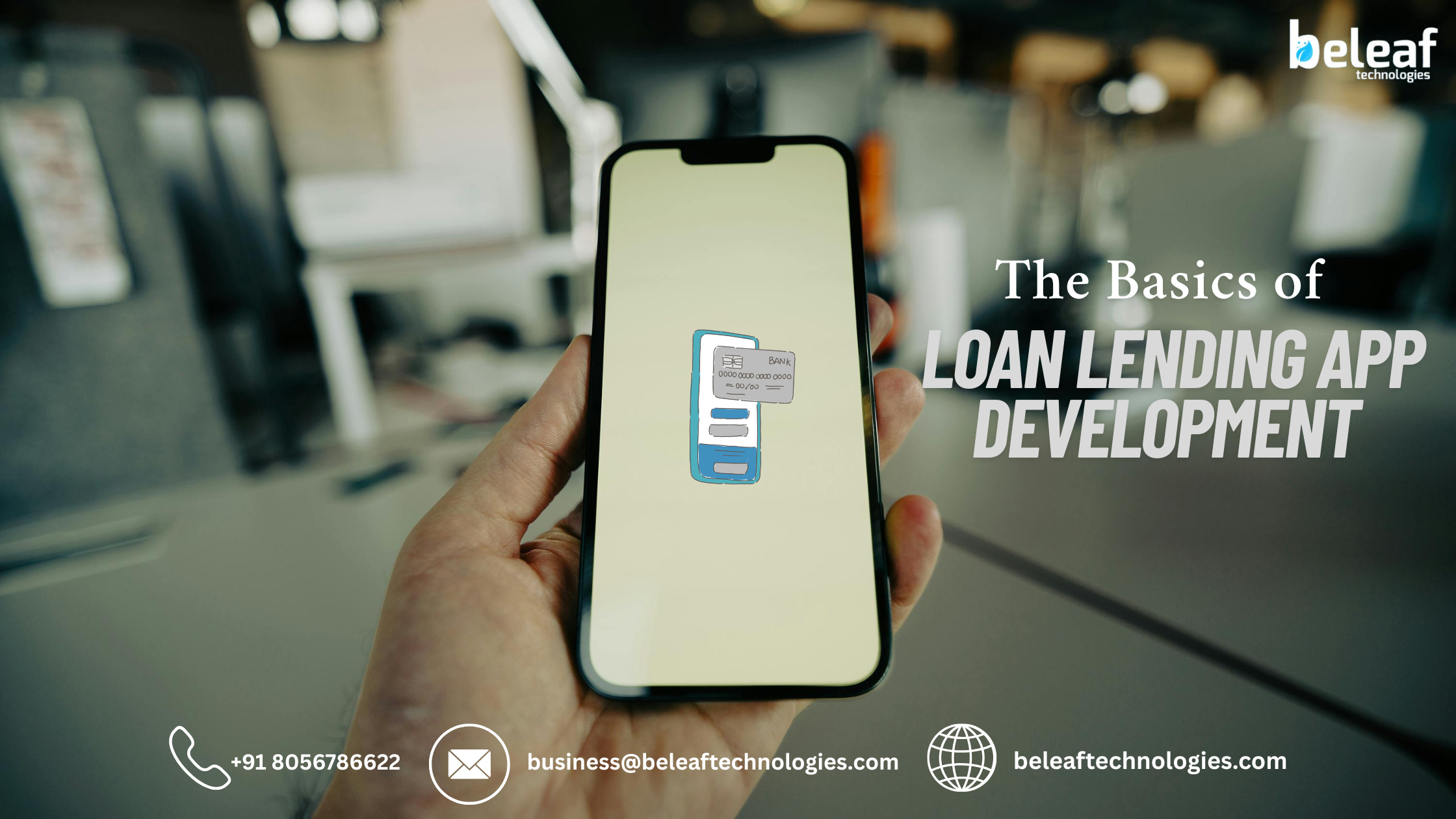As the demand for digital financial services continues to rise, loan lending apps have emerged as a powerful solution for borrowers and lenders alike. These apps make borrowing faster, easier, and more accessible especially for those who prefer managing finances from their smartphones. Whether you’re a fintech startup or a business planning to launch a custom lending app, understanding the basics is the first step.
Let’s break down the essentials of loan lending app development using six key areas that will guide you from concept to launch.
1. An easy guide to understanding how loan lending apps are built and what makes them successful
Loan lending apps are digital platforms that allow users to apply for, track, and repay loans with just a few taps. Successful loan apps focus on three main elements: user experience (UX), security, and functionality.
A good lending app should:
-
Offer a smooth and intuitive user interface.
-
Allow quick onboarding and loan applications.
-
Provide transparent loan terms and repayment options.
-
Assure strict adherence to financial standards and robust data protection.
Apps like MoneyTap, KreditBee, and CASHe have set benchmarks by blending these features with mobile-first designs.
2. Learn the basics of creating loan lending apps in an easy-to-understand manner.
To develop a loan app, you need a blend of technical tools, finance logic, and legal compliance. To put it simply, that looks like this:
-
Frontend (User Interface): What users interact with built using technologies like React Native, Flutter, or Swift.
-
Backend (Server Side): Where the data lives using languages like Node.js, Python, or PHP.
-
Database: Secure storage of user and loan data often powered by MySQL, MongoDB, or Firebase.
-
APIs: For payments, credit scoring, and identity verification integrating third-party services like Razorpay, Paytm, or Experian.
-
Admin Dashboard: For managing user activity, disbursals, and loan approvals.
Also, always remember to comply with KYC/AML regulations, GDPR, and RBI guidelines if you're operating in India.
3. Everything you need to know before developing your own loan lending application
Before jumping into development, ask yourself the following:
-
Who is your target audience? Salaried professionals, students, self-employed individuals, or SMEs?
-
What type of loans will you offer? Peer-to-peer lending, company loans, personal loans, or payday loans?
-
What platform will you build for first? Android, iOS, or both?
-
What is your revenue model? Interest-based, subscription, commission-based, or freemium?
Also consider:
-
Partnering with NBFCs or banks for legal lending support.
-
Getting a strong legal advisor to draft terms, privacy policies, and disclaimers.
-
Choosing the right tech team or development partner if you’re outsourcing.
Planning all of this helps reduce risk and ensures your app meets real market needs.
4. Learn the key components, tools, and process behind creating a loan lending app from scratch
To build a loan app from scratch, here’s the basic workflow:
-
Market Research & Concept Finalization
Identify user needs, competitor gaps, and define your unique value proposition. -
Design UI/UX
Wireframes, user flows, and mockups prioritize ease of use and trustworthiness. -
Select Technology Stack
Consider money and scalability when selecting tools and frameworks. -
Develop Core Modules
-
User registration and verification (KYC)
-
Loan application and approval
-
EMI calculator
-
Wallet/Account linking
-
Repayment schedule
-
Notifications and alerts
Test the App Thoroughly
Conduct QA for bugs, security vulnerabilities, and UI responsiveness.
Launch a Minimum Viable Product (MVP)
Start small, gather user feedback, and iterate before scaling.
5. Look at the simple steps to develop a reliable loan app from start to finish.
Here’s a condensed view of the process:
-
Step 1: Ideation – Identify pain points your app will solve.
-
Step 2: Planning – Set clear timelines, budget, and goals.
-
Step 3: Design & Development – Build features, test continuously.
-
Step 4: Security & Compliance – Implement SSL, two-factor authentication, and regulatory checks.
-
Step 5:Deployment: Open your application from the App Store or Play Store.
-
Step 6: Monitor & Improve – Use analytics and user reviews to enhance the product.
These steps help ensure your app is not only functional but also trustworthy and legally sound.
6. Your step-by-step introduction to building a smart and secure lending app
Security is among the most crucial elements of financial apps.Users are trusting you with sensitive data like bank accounts, PAN numbers, and personal information.Making an ingenious and secure loan application:
-
Use end-to-end encryption for data transfer.
-
Include multi-factor authentication (OTP, biometrics).
-
Integrate real-time fraud detection tools.
-
Enable automated credit scoring with verified APIs.
-
Ensure GDPR or local data protection laws compliance.
Smart features like AI-based credit risk assessment, auto EMI reminders, and chatbot support can take your app to the next level.
Final Thoughts
Loan lending app development doesn’t have to be overwhelming. With the right strategy, technology, and legal preparation, you can build a high-performing app that simplifies the borrowing process for users and adds real value in the fintech space.
Whether you're just exploring the concept or ready to start development, following the basics ensures you lay a solid foundation for success.


